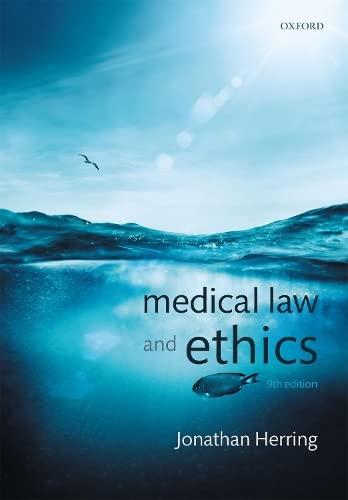Question
Business law questions Case study: 2012 Cost of goods sold 13,348 Allowance for obsolete and unmarketable inventory 13,348 Allowance for obsolete and unmarketable inventory 11,628
Business law questions
Case study: 2012 Cost of goods sold 13,348 Allowance for obsolete and unmarketable inventory 13,348 Allowance for obsolete and unmarketable inventory 11,628 Finished goods inventory 11,628 28 5. a. $572,549 is the cost of finished goods sold. b. $568,735 is the cost of finished goods transferred from work-in-process. c. $442,068 is the cost of raw materials transferred from work-in-process. d. $438,561 is the amount of raw materials purchased. e. $432,197 is the amount of cash disbursed for raw materials. 6. 2011 Inventory Turnover ratio = $575,226/(($211,734+233,070)/2) =2.6344 times 2012 Inventory Turnover ratio = $585,897/(($233,070+268,591)/2) =2.2933 times 7. 2011 Inventory Holding Period = 365/2.6344 =138.55 days 2012 Inventory Holding Period = 365/2.2933 =159.16 days On average during 2011, the company is holding inventory for 139 days before it is sold. In 2012, the company holds its inventory for 159 days before it is sold. From 2011 to 2012, the company is slightly less efficient in its in inventory management. 8. Percent of finished goods estimated as obsolete = 13,348/(167,646+13,348) =0.0737, or 7.37% of finished goods are considered obsolete in the current year. This is the Raw materials inventory Work-in-process inventory Finished goods inventory, net $46,976 $1,286 $184,808 $438,561 $568,735 $13,348 $442,068 $126,000 $572,549 $43,469 $442,068 $568,735 $619 $167,646 Cost of sales Accounts payable $- $39,012 $13,348 $438,561 $572,549 $432,197 $585,897 $45,376 29 2012 Cost of goods sold 13,348 Allowance for obsolete and unmarketable inventory 13,348 Allowance for obsolete and unmarketable inventory 11,628 Finished goods inventory 11,628 28 5. a. $572,549 is the cost of finished goods sold. b. $568,735 is the cost of finished goods transferred from work-in-process. c. $442,068 is the cost of raw materials transferred from work-in-process. d. $438,561 is the amount of raw materials purchased. e. $432,197 is the amount of cash disbursed for raw materials. 6. 2011 Inventory Turnover ratio = $575,226/(($211,734+233,070)/2) =2.6344 times 2012 Inventory Turnover ratio = $585,897/(($233,070+268,591)/2) =2.2933 times 7. 2011 Inventory Holding Period = 365/2.6344 =138.55 days 2012 Inventory Holding Period = 365/2.2933 =159.16 days On average during 2011, the company is holding inventory for 139 days before it is sold. In 2012, the company holds its inventory for 159 days before it is sold. From 2011 to 2012, the company is slightly less efficient in its in inventory management. 8. Percent of finished goods estimated as obsolete = 13,348/(167,646+13,348) =0.0737, or 7.37% of finished goods are considered obsolete in the current year. This is the Raw materials inventory Work-in-process inventory Finished goods inventory, net $46,976 $1,286 $184,808 $438,561 $568,735 $13,348 $442,068 $126,000 $572,549 $43,469 $442,068 $568,735 $619 $167,646 Cost of sales Accounts payable $- $39,012 $13,348 $438,561 $572,549 $432,197 $585,897 $45,376 29
1. What effect do some _____ laws have on businesses? _____.
2. Limited ___ is a characteristic of what form of _____ ownership?
3. An important _____ of full-disclosure laws and _____ is to ______.
4. Last year, Mr. McKinney gave a portion of his wages to a local charity and was not required to pay taxes on the amount of his donation. This is an example of a(n)
5. Michelle is a small business owner who has _______ information in her computer files. She has wasted a lot of time and money sending mail to customers who have moved or have received multiple copies of her mailings. What type of computer ______ should Michelle use to update her customer database?
6. What are _____ risks to a business that fails to follow ______ regulations
7. Which of the following reasoning processes does a ______ use to identify financial system transactions that are very similar to each other but are not exactly alike
8. Which of the following has the ____ responsibility to make decisions on behalf of a company's____:
9. Which of the following is an _____ deduction: _____.
10 Last year, Mr. McKinney gave a portion of his wages to a local charity and was not required to pay taxes on the amount of his donation. This is an example of a(n)
Step by Step Solution
There are 3 Steps involved in it
Step: 1

Get Instant Access to Expert-Tailored Solutions
See step-by-step solutions with expert insights and AI powered tools for academic success
Step: 2

Step: 3

Ace Your Homework with AI
Get the answers you need in no time with our AI-driven, step-by-step assistance
Get Started


